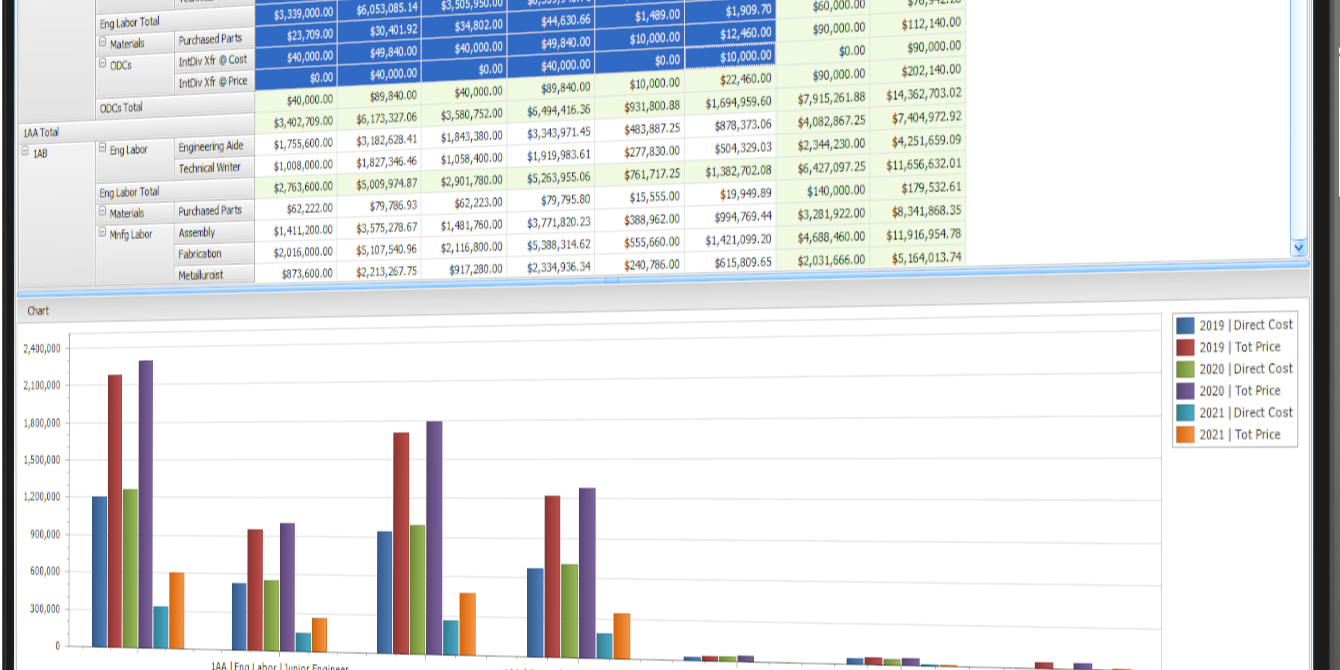Experienced negotiators know: preparation is critical to your efforts in forming a win-win deal. It might seem like a no-brainer, but lack of preparation is all too common on both sides of federal contract negotiations.
One important part of preparing is knowing your customer's negotiation style. Fortunately for those negotiating with the U.S. Department of Defense, your customer's recommended bargaining techniques are published on Defense Acquisition University's public website (and it's no surprise that Rule No. 1 is "Be Prepared").
Volume 5 of DAU's Contract Pricing Reference Guides provides negotiation techniques for federal acquisition professionals. The following is a high-level overview of Chapter 6 of the volume, "Ten Rules for Bargaining Success," including key takeaways for government contractors. Not only can this information help you know what to expect in negotiating with the DoD, you might also pick up (or be reminded of) some valuable techniques for yourself.
Rule No. 1: Be Prepared

DAU says: “Poor preparation leads to poor contracts that require constant clarification, modification, and of course more negotiation.”
Government negotiators are advised to get to understand contractors' solutions as much as possible, via market research and direct communication with the contractor. These activities are key to assessing a "fair and reasonable" value.
Takeaway for contractors: document, document, document!
Lack of preparation on the contractor side often comes down to insufficient of cost or pricing documentation (or the failure to capture this data in a centralized location where others can find it later). Documentation can be especially hard to track down when it's needed long after the original proposal pricing was done, as in negotiating change-orders or responding to DCAA audits or CAS noncompliance claims on a current program.
It is important to have best practices and procedures for capturing and storing documentation. Use a system that captures all of your cost/pricing data and documentation to help maintain records for easy access and future use.
If finding the time to prepare well for each negotiation is a factor, internally audit your own systems. Are there areas that are slowing you down? Could a better software solution help a bogged down area?
Rule No. 2: Aim High
DAU says: “Negotiators, like people in general, are naturally more aware of the pressures and limitations affecting them than they are of the pressures and limitations affecting other negotiators. As a result, buyers are often willing to pay more than necessary, while sellers are often willing to accept less than necessary.”
Takeaway for contractors: stay positive, be aware of your limitations, but don’t sell yourself short.
This rule is based on empirical evidence that the higher the negotiator’s expectations, the better the negotiator will ultimately perform. Though as a contractor, you must be careful as there are certain constraints around ‘aiming too high’ that could come with severe penalties. While many negotiators come in with high hopes, skilled negotiators are also keenly aware of their opponents' weaknesses.
Rule No. 3: Give Yourself Room to Compromise
DAU says: "Compromise is essential to successfully conducting most negotiations."
The whole point of “aiming high” in rule two is to help with rule number three. If the contractor’s opening position is too close to their objective, there isn't much room left for negotiation.
Takeaway for contractors: Having the time to plan for compromise is critical, so make sure you have the right efficiencies in place to give you that time.
In developing contract pricing, it is helpful to run several different scenarios to help fully understand any compromises that may have to be made. Having the ability to quickly run and analyze a variety of positions will permit you to, as DAU puts it: "demonstrate flexibility in making the concessions needed to reach a mutually satisfactory result."
Rule No. 4: Put the Pressure on the Contractor
DAU says: "Because of the pressure inherent in every negotiation, success in negotiation stems in large part from the ability of a negotiator to increase pressure the other negotiator while at the same time limiting the pressure on themselves."
Takeaway for contractors: Hang in there.
It can feel like there isn’t much a contractor can do here. Sure, you can walk away from the potential business (more on this in rule 10), but that is not always a realistic option.
The best thing a contractor can do is be flexible and ready for anything. If the Government tries to make changes in requirements, terms, and conditions, have available processes, procedures, and back-office systems that can best equip you to handle those situations quickly and accurately.
Rule No. 5: Do Not Volunteer Weaknesses
DAU says: “Never volunteer information that would weaken your negotiating position."
The rule goes on to say, “you can normally adhere to this rule by carefully wording statements or by avoiding a direct response to a direct question.”
Takeaway for contractors: Keep asking questions until you get a direct answer.
The guide makes this rule very clear: the recognition of weaknesses (even to show good faith) is advised against. So why would a contractor do the opposite? Do everything possible to avoid volunteering weaknesses. When prodding for vulnerabilities in your opposition, remember to always listen to the answers given, and if you sense a weakness, keep asking questions.
Rule No. 6: Use Concessions Wisely
DAU says: "The concessions that you make, when you make them, and how you make them will all have a significant affect on the outcome of the negotiation."
The DAU guide advises negotiators to be conservative with concession amounts, get something in return for your concessions, and to be weary of 'equal concession' and 'splitting-the-difference' traps.
Takeaway for contractors: take DAU's advice.
Remember to not concede too much too soon, or all at once. Referring back to rule three, ‘give yourself room to compromise.’ If you do have to concede, start with one individual concession at a time, and always ask for something in exchange. Keep the your objectives in mind, and do not be distracted by offered concessions that don't add real value on your side.
Rule No. 7: Say It Right
DAU says: "The importance of good interpersonal relationships cannot be overemphasized."
The gist of this rule is to strike a balance between being personable while maintaining a professional demeanor and focusing on your party's objective.
Takeaway for contractors: You catch more bees with honey.
This rule is pretty self-explanatory. Be polite; do not interrupt; be cautious about expressing unrelated opinions. Remember that a negotiator speaks for the numbers, and even if the numbers are impeccable, it’s how they are presented that can make all the difference.
Rule No. 8: Satisfy Non-Price Issues
DAU says: "Most negotiations will not end in agreement unless both the price and non-price issues are satisfied."
Negotiators are advised to be aware of non-price issues that are important to the other side, in order to build value without sacrificing dollars.
Takeaway for contractors: Free-up time to research and discuss non-price issues by providing crystal-clear pricing justification that can be quickly understood and accepted.
Price is normally the easiest place to start in negotiations. Dedicated government contract pricing software helps present pricing logic in easy-to-trace formats, dramatically decreasing price negotiation time and disputes. This will free up time to focus on non-price issues.
Rule No. 9: Use the Power of Patience
DAU says: "Quite often the extra negotiating time taken by patient negotiators translates into thousands and even millions of dollars in additional concessions."
The guide advises government negotiators to use patience to put stress upon the contractor, display resolve, and dissipate emotions that may cloud judgement.
Takeaway for contractors: Practice patience and see if there are areas where you can use time to your advantage, such as on other proposals.
Like rule four, the Government holds a lot of the cards here. As a contractor dealing with the pressures of building business and increasing revenue, prolonging the time it takes to award the bid can tip the scales in favor of the Government. In stalemates where you have no more room to make reasonable concessions, take this waiting time to work on more bids in case the current one is unsuccessful.
Rule No. 10: Be Willing to Walk Away From or Back to Negotiations
DAU says: "Good negotiators are neither afraid to walk away from bad deals nor too proud to return to the negotiation table once they realize a better deal cannot be obtained."
Takeaway for contractors: Stay professional, objective, and leave your ego at home.
With all the work a buyer and offeror put into a proposal by the time negotiations occur, the last thing anyone wants is a stalemate.
Deadlocks are frequently caused by personality conflicts, so it is sometimes necessary to change principal negotiators to help the process along. Taking a break between negotiation sessions sometimes helps to collect further support for the position or to answer questions. Exhaust all reasonable options before throwing in the towel.
ProPricer Can Help
ProPricer's government contract pricing software helps industry proposal teams and government acquisition professionals prepare for negotiations and communicate cost and pricing positions.
With ProPricer's “What-If” features, users can easily analyze multiple scenarios, compare the cost impact of project timeline changes, see the effect of reaching a target price, swap hours or costs from one resource to another, and quickly make any number of additional changes to your resources and rates while pricing logic remains intact. Enter negotiations knowing that formulas and pricing logic are locked down, resulting in less questions and more time to focus on non-pricing issues.
With forward pricing and negotiated rates for each proposal stored in one central location, providing documentation becomes a matter of a few mouse clicks. Generate proposal cost and pricing reports that comply with Federal Acquisition Regulations (FAR), DFARS, Cost Accounting Standards (CAS), and customer requirements. All reports are customizable, making it easy to submit documentation that accommodates virtually any new formatting or data mandates imposed by government or industry customers.





